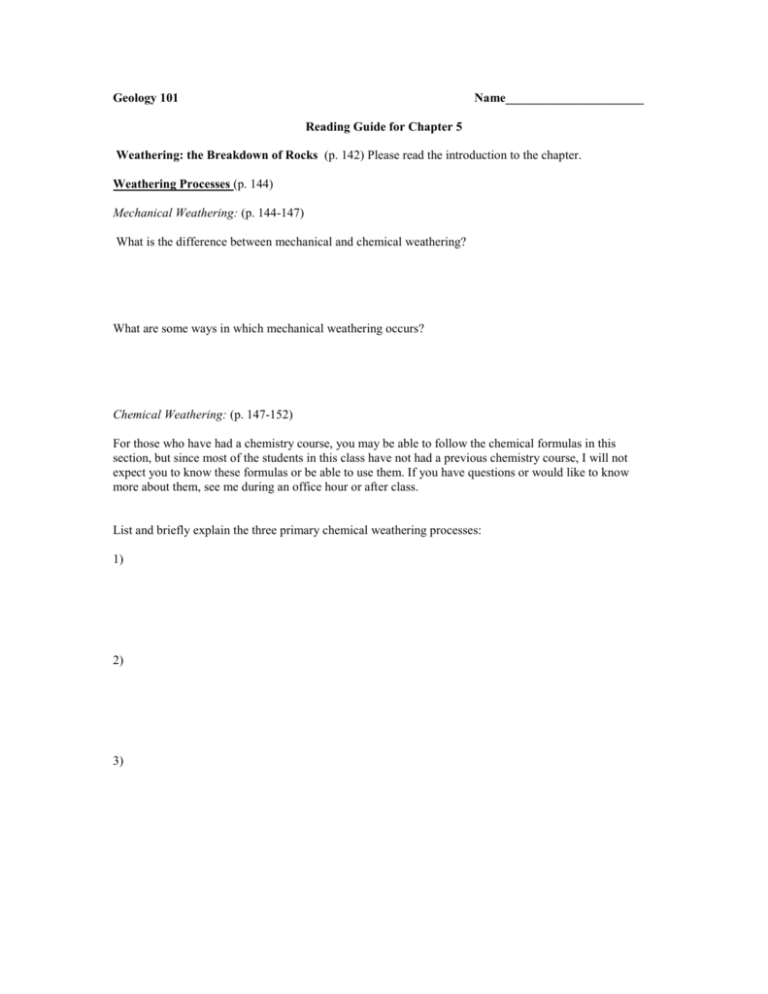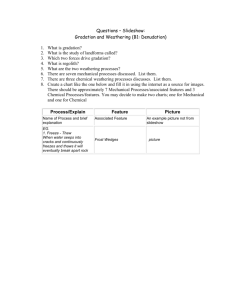Chapter 5
advertisement

Geology 101 Name______________________ Reading Guide for Chapter 5 Weathering: the Breakdown of Rocks (p. 142) Please read the introduction to the chapter. Weathering Processes (p. 144) Mechanical Weathering: (p. 144-147) What is the difference between mechanical and chemical weathering? What are some ways in which mechanical weathering occurs? Chemical Weathering: (p. 147-152) For those who have had a chemistry course, you may be able to follow the chemical formulas in this section, but since most of the students in this class have not had a previous chemistry course, I will not expect you to know these formulas or be able to use them. If you have questions or would like to know more about them, see me during an office hour or after class. List and briefly explain the three primary chemical weathering processes: 1) 2) 3) Factors that Influence Chemical Weathering: (p. 152) ►What role does climate have in promoting chemical weathering? / In what type of climate does chemical weathering occurs at the fastest rate? Slowest rate? ► In general, rocks with more mafic minerals (dark colored) will chemically weather ________________ (faster/slower) than more felsic minerals. We can explain this trend because mafic minerals formed at higher temperatures, so they are the ____________________ (least/most) stable at the earth’s surface. Some Products of Chemical Weathering: (p. 155) From the previous section you learned that hydrolysis produces clays. These clays are useful in our world as are the metallic ores that are concentrated as a result of the weathering processes, but I will not ask the details of this material on an exam. You should be familiar with spheroidal weathering and how it forms. You see this in some of the basalts in eastern Washington. Weathering occurs faster on the corners and edges of the basalt columns, creating rounded masses of basalt without tumbling in a river. Soils and Soils Formation (p. 156) Influences on Soil Formation: (p. 157) An important idea in this section is that soils are also a function of the rock type of the bedrock. Soils that are derived from sandstones will be much sandier than soils derived from mudstones (aka shales) that will be more rich in clays. Sections entitled Typical Soil Profile, Classifying Soils, and Weathering in Extraterrestrial Environments will not be covered on the second exam. Students in Forestry and Civil Engineering may want to read the soils information carefully for applications in their field. 2






